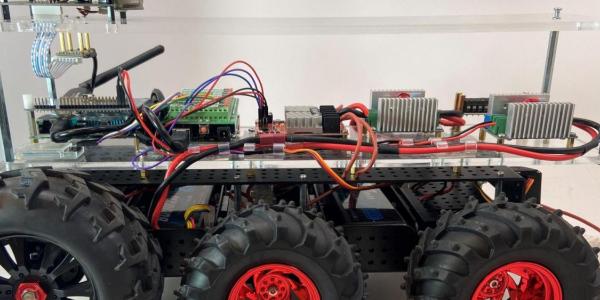Want to compare a kid’s experiment you can easily conduct on Earth to a similar one on the International Space Station, which is whipping around in weightlessness 200 miles over our heads at a mind-blowing 17,000 miles per hour? Well, here’s your chance.
The University of Colorado Boulder and its educational partners are seeking K-12 teachers, students and life-long learners around the world interested in how the low gravity on the ISS, which makes astronauts float, may affect the behavior of ants up there.
Dubbed “Ants in Space,” the educational ant payload was designed and built by CU-Boulder’s BioServe Space Technologies and launched to the space station Jan. 9. The project involved shipping ants in specially built containers developed by BioServe, a part of the university’s aerospace engineering department, to the ISS using a commercial Cygnus spacecraft.
While previous CU-Boulder educational space station experiments have included spiders, butterflies and ladybugs, the new experiment will examine foraging patterns of the common pavement ant, said BioServe Business Development Manager and Education Program Director Stefanie Countryman. After the ants arrived on the ISS, NASA astronauts Mike Hopkins and Rick Mastracchio manually activated eight ant habitats by lowering a barrier in each that allowed the ants to move out of the small nest area and into a larger forage area.
Hopkins and Mastracchio videotaped and took photographs of ants meandering about in their special space homes, then provided the HD video and snapshots to BioServe. The video and photos were passed on to colleagues at the Baylor College of Medicine Center for Education Outreach, who designed the curriculum for the experiments.
The hope is that thousands of students around the world will participate in the space station experiments by constructing their own ant habitats on Earth, making scientific observations of the ant behavior, then comparing classroom results to videotape of the ants in space. In one of the videos, ants in the space flight habitats appear to be spinning around as they attempt to find their footing.
Previous research by Stanford University Professor Deborah Gordon, principal investigator on the Ants in Space project, has shown that some ant species have the ability to search areas collectively without individual communication. When ant densities are high, each ant thoroughly searches one small area in a circular, “random” walk. When ant densities are low, each ant searches by walking in a relatively straight line, allowing it to cover more ground.
“Ants assess their own density at the rate at which they meet,” said Countryman, who said the individual ant habitats were loaded with 80 ants each before launch. “The experiment examines whether ants will use the rate at which they meet to assess density in microgravity, using straighter paths in the larger habitat areas,” Countryman said. “The results will be compared to ground controls, which in this case will include ant habitats in K-12 classrooms around the world.”
Countryman estimates the previous BioServe K-12 education experiments involving the behavior of butterflies, ladybugs and spiders in space reached hundreds of thousands of students around the world in the past two decades.
In addition to Gordon, Associate Professor Michael Greene of the University of Colorado Denver is a research partner on the effort. The experiment is sponsored by NASA’s National Lab Education Office as well as the Center for the Advancement of Science in Space, a nonprofit group headquartered in Cape Canaveral, Fla.
Teachers interested in participating can visit http://www.bioedonline.org for the curriculum or contact Countryman at countrym@colorado.edu.
In the past 26 years, BioServe has designed, built and flown microgravity life science research experiments on more than 40 space missions. BioServe has a full suite of space flight hardware, both on ISS and on the ground, which supports its own research as well as research conducted by its customers and partners. Past BioServe partners include large and small pharmaceutical and biotechnology companies, universities and NASA-funded researchers.
For more information on BioServe visit http://www.colorado.edu/engineering/BioServe/index.html.
Contact:
Stefanie Countryman, BioServe, 303-735-5308
Countrym@colorado.edu
Jim Scott, CU media relations, 303-492-3114
Jim.Scott@colorado.edu


